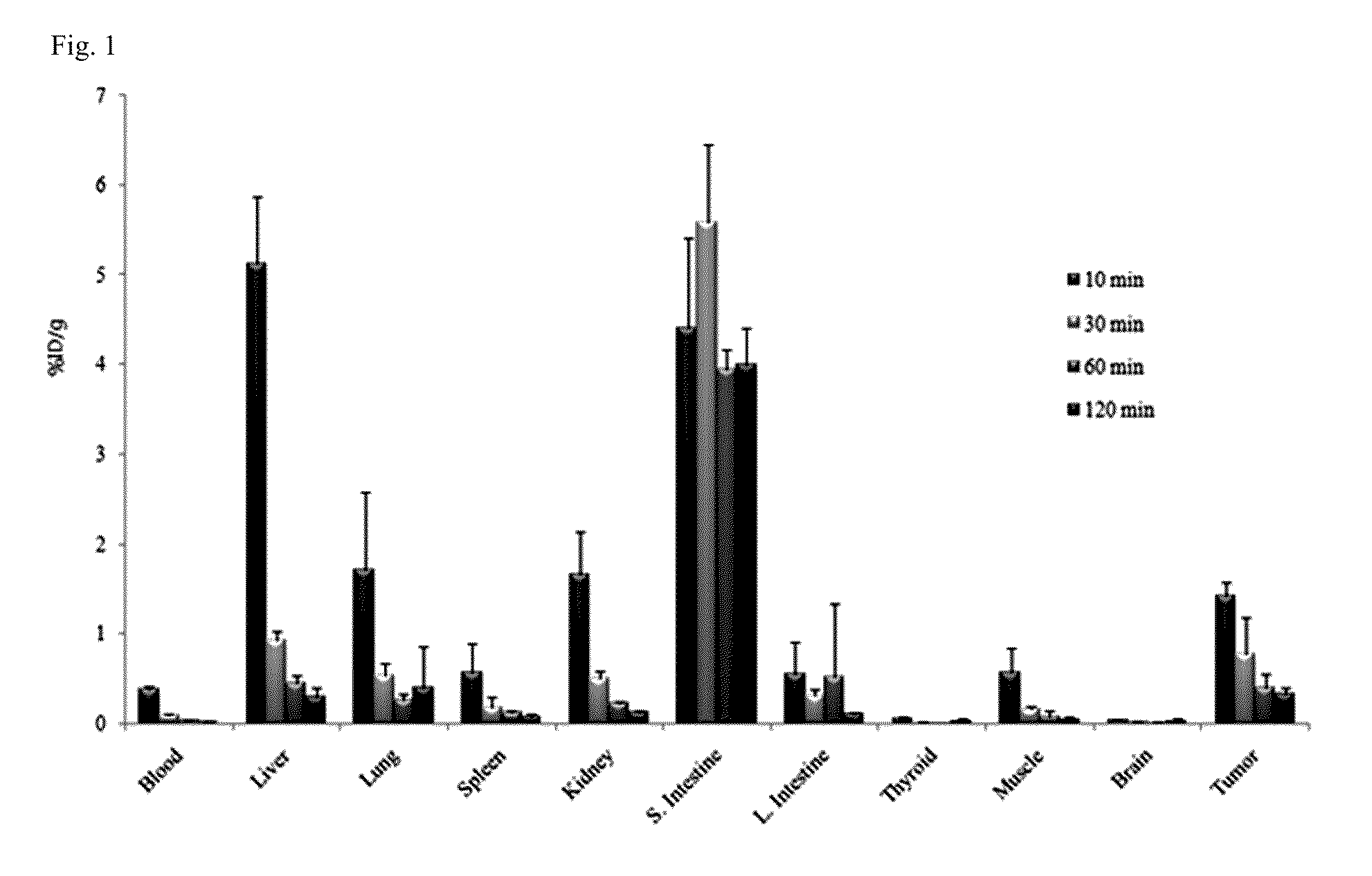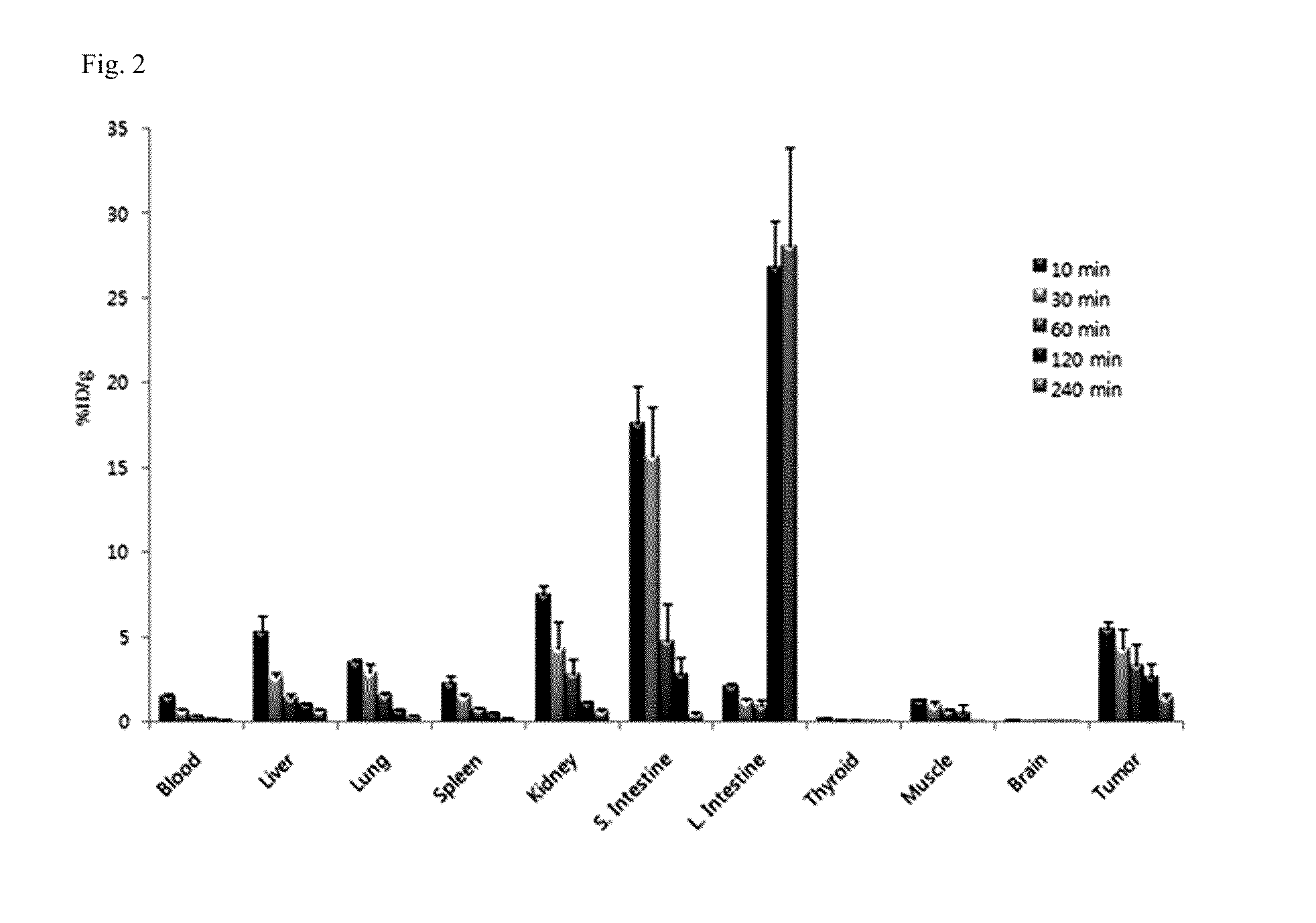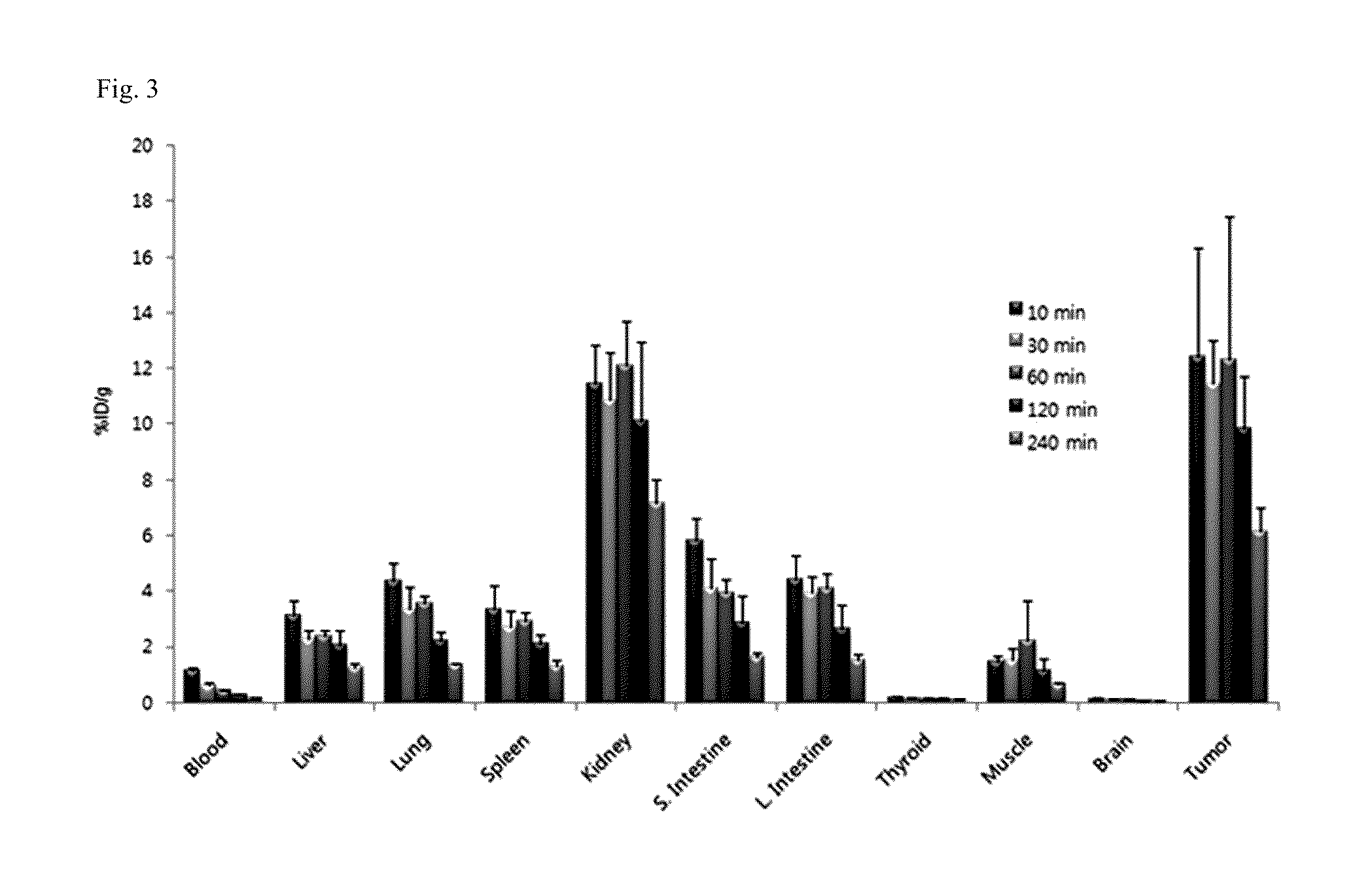Tricarbonyl technetium-99m, rhenium-185/187, or rhenium-188 labeled cyclic RGD derivatives and uses thereof
a technology of rhenium-188 and rhenium-99 m, which is applied in the field of tricarbonyl technetium99 m or rhenium-188 labeled cyclic rgd derivatives, can solve the problems of toxicity to normal cells including bone marrow cells and gastrointestinal cells, and is not possible to diagnose brain tumors, etc., to achieve effective growth inhibitory effect and treatment efficacy, high resolution, and reduced intake
- Summary
- Abstract
- Description
- Claims
- Application Information
AI Technical Summary
Benefits of technology
Problems solved by technology
Method used
Image
Examples
examples 1-5
Preparation of Precursor for Tricarbonyl Technetium-99m or Rhenium-188 Labeled Cyclic RGD Derivative According to the Present Invention
example 1
Preparation of cyclic {(tricarbonyl-N-α-bis-hydroxycarbonyl methyl-lysine)-arginin-glycine-aspartic acid-D-phenylalanine} (2a)
[0134]
[0135](Step 1)
[0136]The compound (240 mg, 0.26 mmol) of Formula 3 prepared at Preparative Example 1 and t-butyl bromoacetate (115 mL, 0.77 mmol) were dissolved in acetonitrile (CH3CN, 5 mL) and N,N′-Diisopropylethylamine (DIEA, 130 μL, 0.77 mmol), and the reaction mixture was stirred for 12 hours at 50° C. The solvent was removed under vacuum and the compound of Formula 4 was isolated by column chromatography with organic solvent, methanol and dichloromethane (10:90=MeOH:CH2Cl2) solution.
[0137]MALDI-TOF MS (M+Na+)=1163.4
[0138](Step 2)
[0139]The compound of Formula 4 prepared at Step 1 was dissolved in TFA:Et3SiH:H2O (95:2.5:2.5, 10 mL). After reaction mixture was stirred at room temperature for 12 hours, the solution was entirely evaporated under vacuum, and then solid obtained by addition of diethyl ether was filtered. The resultant white solid was suff...
example 2
Preparation of cyclic {(tricarbonyl-N-α-bis-hydroxycarbonyl methyl-glycine-CONH(CH2CH2O)4CH2CH2CONH-lysine)-alginine-glycine-aspartic acid-D-phenylalanine} (2b)
[0141]
[0142](Step 1)
[0143]The compound of Formula 9 was prepared with the method of Step 1 at Example 1, except for the difference of using glycine-methylester-hydrochloride of Formula 8 instead of the compound of Formula 3.
[0144]1H NMR (400 MHz, CDCl3) δ 3.71 (s, 3H), 3.64 (s, 2H), 3.53 (s, 4H), 1.44 (s, 18H).
[0145](Step 2)
[0146]The compound (550 mg, 1.73 mmol) of Formula 9 prepared at Step 1 was dissolved in methanol (MeOH, 10 mL), and 1 M lithium hydroxide (1 M LiOH, 3.4 mL, 3.4 mmol) was added. After stirring at 50° C. for 1 hour, 1 N hydrochloric acid (1 N HCl, 3.8 mL, 2.2 mmol) was added to neutralize. With the removal of solvent under vacuum, the compound of Formula 10 was obtained.
[0147]1H NMR (400 MHz, CDCl3) δ 3.48 (s, 2H), 3.47 (s, 4H), 1.48 (s, 18H).
[0148](Step 3)
[0149]The compound (60 mg, 0.19 mmol) of Formula 10...
PUM
| Property | Measurement | Unit |
|---|---|---|
| temperature | aaaaa | aaaaa |
| temperature | aaaaa | aaaaa |
| weights | aaaaa | aaaaa |
Abstract
Description
Claims
Application Information
 Login to View More
Login to View More - R&D
- Intellectual Property
- Life Sciences
- Materials
- Tech Scout
- Unparalleled Data Quality
- Higher Quality Content
- 60% Fewer Hallucinations
Browse by: Latest US Patents, China's latest patents, Technical Efficacy Thesaurus, Application Domain, Technology Topic, Popular Technical Reports.
© 2025 PatSnap. All rights reserved.Legal|Privacy policy|Modern Slavery Act Transparency Statement|Sitemap|About US| Contact US: help@patsnap.com



